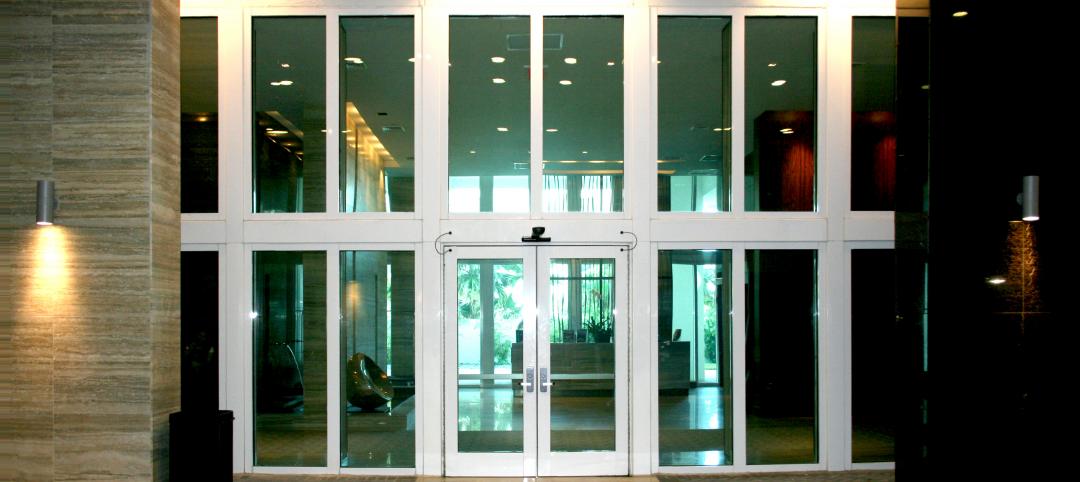Freestanding pediatric facilities and children’s hospitals that specialize in treating patients ages zero through 18 have operational and physical characteristics that differ from those of adult facilities. The design of pediatric facilities can carry throughout the entire building, creating a united, consistent theme.
This is not necessarily the case when it comes to designing a floor or a wing dedicated to children’s care in a general or university hospital. This “layer cake” design must succeed in integrating pediatric and adult medical services, while recognizing the important differences between the two patient populations. It also must differentiate between various age groups within the pediatric population, providing a comforting—and safe—environment for patients, their families, and staff members.
Caring for Children’s safety
The additional safety and security measures required for pediatric patients begin with the layout of the entire hospital. Pediatric services in a hospital should be located as high as possible for security purposes. The higher the floor, the more difficult it is for someone—even a disgruntled parent or family member—to abduct a child, and the more protective measures that can be put in place between the child’s room and the hospital exit. Placing a children’s floor at the top of a hospital is also a great opportunity for secure outdoor access, such as a rooftop garden play area.
Within the hospital, visitor protocols should be in place to ensure safety throughout the pediatric area. Because the family is a vital part of a pediatric patient’s care team, most children will have visitors at all hours of the day, and even overnight. Regulations must be in place to ensure all visitors are accounted for. In many instances, one parent will be given 24/7 access to the child’s floor to provide the necessary companionship.
To guarantee the best possible medical care for pediatric patients, staff should be trained to treat patients of all ages. Hospitals with pediatric units should have a pharmacist who specializes in pediatric medications and dosing. Radiology technicians should be trained to calibrate machines for children’s small bodies, as an adult X-ray dosage delivers approximately 300 times more radiation than a child’s body needs.
Disease and injuries present differently in children than in adults. Emergency rooms need a pediatric specialist on call at all times to treat injuries and help identify child-specific diseases that ER physicians who treat adults may not be familiar with. These specialists should be familiar with child-specific diagnoses and protocols. Injuries or burns could be signs of abuse. Conditions such as congenital heart disease and cystic fibrosis are more common in children and may be overlooked by adult ER caregivers.
If round-the-clock staffing of these experts is not possible, technology allows doctors to communicate remotely via a video conferencing service. Doctors can complete bedside pediatric evaluations from miles away.
Child life specialists, usually only found in freestanding children’s hospitals, can be assets to general hospitals, as they specialize in providing whole-person healing to children and families facing stressful medical situations. These specialists provide strategies and positive distraction techniques to help families cope with hospitalization. They can also assist with everyday living needs, schoolwork coordination, home care instructions for caregivers, and helping the child understand the medical treatment and recovery process.
In surgical areas, induction rooms outside the OR and diagnostic imaging areas allow young patients to undergo anesthesia before entering the procedure room. This allows children to fall asleep with their family at their bedside without the shock and fear of seeing the machines and equipment associated with surgery. Waking up from anesthesia can be a traumatic experience for a child, so a private recovery space should also be provided for families when the child comes out of a sedated state.
Designing for Children of All Ages
Within the pediatric patient population, there is a wide range of ages which must be accounted for in the design of the facility. In treating the family as the patient, we are designing spaces to soothe the minds and reduce the stress of children and adults.
Interior designs with bright colors or childish themes can come off as condescending to older children or teenagers. While some themes may seem like a good choice for pediatrics, there needs to be a balance between fun and calming. The design should avoid being dreary and clinical but does not need an excess of whimsy.
Colors also impact the mood of patients and staff. Bright purples and oranges may seem appealing to young children but may agitate a nurse in the middle of an 18-hour shift. Artwork in care areas should be designed with storytelling in mind – allowing the family or caregiver to positively distract a young patient from their fears for a while.
Nature-based themes and color palettes are incredibly appealing to all ages. Colors should also be full-spectrum but used in careful proportions, mixing warm neutrals that represent the earth with calming blues and greens inspired by the sky and grass and subtle pops of color indicative of flowers. Designers must also be sensitive to context; a nature-based color palette that comforts a patient in Phoenix may have the opposite effect on a patient in Columbus, Ohio.
Designs that represent the community in which the hospital is located also contribute to sustainability. What is considered cool or trendy in the eyes of children may change over the years, but the natural landscape and culture of the area is timeless.
Putting the design in context can make the children and their families feel like part of a larger community by being in the hospital, and can be a positive element of the healing process. Treating the campus holistically with appropriate architectural character and style, design details, focal points for wayfinding, use of indigenous finishes, and a diversity of artwork that mirrors the socioeconomic vocabulary of the community can help make any hospital environment familiar and comforting. These elements create a common thread that ties both the adult and pediatric care environments together so that the brand and message of services are aligned.
Linda M. Gabel, AAHID, IIDA, is a facilities planner at OSU Wexner Medical Center in Columbus, Ohio. Gabel has more than 29 years of professional design experience, with the last 24 dedicated to pediatric and adult acute healthcare, memory care, and senior living environments. As the 2005-2009 IIDA Healthcare Forum Advisor and 2010-2013 Credentialing Regent on the board of the American Academy of Healthcare Interior Designers, Gabel provides active leadership in the design of healthcare environments on an international level. Gabel has presented healthcare environment white papers on healthcare design for pediatric, bariatric, and aging populations at major conferences and universities: Healthcare Design, Health Facilities Institute, National Association of Children’s Hospital and Related Institutions (NACHRI), NEOCON, Stephen F. Austin State University, Western Carolinas University, and The Ohio State University.
Related Stories
| Sep 23, 2011
Fire and hurricane rated glazed wall assemblies installed at multi-family residence in Florida
Fire and hurricane assemblies meet design and code requirements.
| Sep 23, 2011
ABI turns positive after four monthly declines
On the heels of a period of weakness in design activity, the Architecture Billings Index (ABI) took a sudden upturn in August.
| Sep 23, 2011
Under 40 Leadership Summit
Building Design+Construction’s Under 40 Leadership Summit takes place October 26-28, 2011 Hotel at the Monteleone in New Orleans. Discounted hotel rate deadline: October 2, 2011.
| Sep 20, 2011
Jeanne Gang wins MacArthur Fellowship
Jeanne Gang, a 2011 MacArthur Fellowship winner described by the foundation as "an architect challenging the aesthetic and technical possibilities of the art form in a wide range of structures."
| Sep 20, 2011
Francis Cauffman wins two IDA design awards
The PA/NJ/DE Chapter of the International Interior Design Association (IIDA) has presented the Francis Cauffman architecture firm with two awards: the Best Interior Design of 2011 for the W. L. Gore offices in Elkton, MD, and the President’s Choice Award for St. Joseph’s Regional Medical Center in Paterson, NJ.
| Sep 20, 2011
PPG, Pleotint to co-market environmentally adaptive glazing technology with low-e glass
Laminated between two lites of glass, SRT interlayer may be used monolithically or within an insulating glass unit.
| Sep 19, 2011
Portland team hired as LEED and commissioning consultants for $5.5B downtown sustainable project in Qatar
The $5.5 billion sustainable downtown regeneration project underway by Msheireb Properties will transform a 76 acres site at the centre of Doha, Qatar’s capital city, recreating a way of living that is rooted in Qatari culture, attracting residents back to the city center and reversing the trend for decentralization.
| Sep 16, 2011
Chicago Architecture Foundation partners with seven renowned architects to re-imagine Chicago neighborhoods
Design on the Edge presents plans created by seven teams of nine Chicago-based architects to reimagine seven of the city’s neighborhoods to encourage street life, retail districts and dense housing around the existing “L” transit system.
| Sep 14, 2011
USGBC L.A. Chapter's Green Gala features Jason McLennan as keynote speaker
The Los Angeles Chapter of the nonprofit USGBC will launch its Sustainable Innovation Awards this year during the chapter's 7th Annual Green Gala on Thursday, November 3.
















